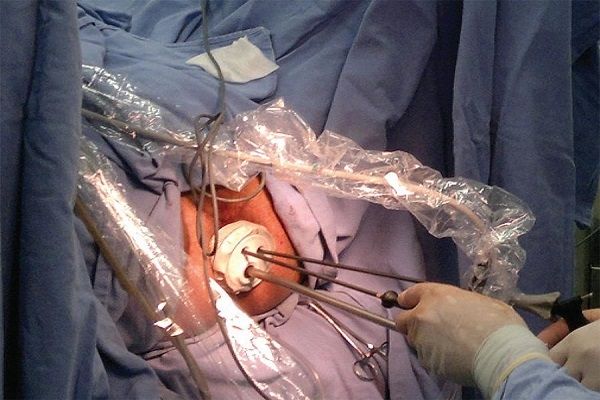Total pelvic exenteration is a surgical procedure that involves the removal of the bladder, rectum, and other pelvic organs. It is a complex and invasive procedure that is typically performed in patients with advanced pelvic cancers. Traditionally, total pelvic exenteration has been performed using open surgery techniques, which are associated with significant morbidity and mortality. However, recent advancements in laparoscopic surgery and transanal minimal invasive surgery (TAMIS) have led to the development of less invasive approaches to total pelvic exenteration. In this essay, we will discuss the laparoscopic total pelvic exenteration using transanal minimal invasive surgery technique and its implications for the management of advanced pelvic cancers.
Background:
Pelvic cancers, such as rectal cancer and bladder cancer, are common types of cancer that can spread to nearby organs and tissues, including the bladder, rectum, and other pelvic organs. Total pelvic exenteration is a surgical procedure that involves the removal of these organs and tissues in order to prevent the spread of cancer and improve outcomes for patients.
Traditionally, total pelvic exenteration has been performed using open surgery techniques. However, open surgery is associated with significant morbidity and mortality, including infection, bleeding, and longer hospital stays. In recent years, laparoscopic surgery and TAMIS have emerged as less invasive approaches to total pelvic exenteration.
Laparoscopic total pelvic exenteration using TAMIS:
Laparoscopic total pelvic exenteration using TAMIS is a minimally invasive approach to total pelvic exenteration that involves the use of laparoscopic instruments and TAMIS instruments to remove the bladder, rectum, and other pelvic organs. The procedure involves making small incisions in the abdomen and anus and inserting specialized instruments, including a laparoscope and TAMIS devices.
The laparoscope provides a high-definition view of the surgical site, allowing the surgeon to visualize and manipulate the organs and tissues with greater precision and control. The TAMIS devices are used to remove the rectum and other pelvic organs through the anus, minimizing the need for large incisions and reducing tissue damage.
Advantages:
Laparoscopic total pelvic exenteration using TAMIS offers several advantages over traditional open surgery. One of the main advantages is its minimally invasive approach. The use of small incisions and specialized instruments reduces tissue damage and minimizes scarring, resulting in less pain and a faster recovery time for patients.
The laparoscopic approach also allows for greater precision and control, enabling the surgeon to manipulate the organs and tissues with greater accuracy and reducing the risk of complications. The use of TAMIS devices to remove the rectum and other pelvic organs through the anus further minimizes the need for large incisions and reduces the risk of infection and other complications.
Challenges:
Despite its many advantages, laparoscopic total pelvic exenteration using TAMIS also presents several challenges. One of the main challenges is the complexity of the procedure. Total pelvic exenteration is a complex and invasive procedure that requires specialized training and expertise. The laparoscopic approach and use of TAMIS devices further add to the complexity of the procedure, requiring additional training and expertise.
There is also a risk of complications associated with the procedure. Like all surgical procedures, there is a risk of bleeding, infection, and other complications. In addition, the use of TAMIS devices to remove the rectum and other pelvic organs through the anus can be challenging and may increase the risk of complications, such as injury to the anal sphincter.
Conclusion:
Laparoscopic total pelvic exenteration using TAMIS is a minimally invasive approach to total pelvic exenteration that offers several advantages over traditional open surgery. The use of small incisions and specialized instruments reduces tissue damage, minimizes scarring and leads to a faster recovery time for patients. The laparoscopic approach and use of TAMIS devices also provide greater precision and control, reducing the risk of complications and improving outcomes for patients.
However, the procedure is complex and requires specialized training and expertise. The use of TAMIS devices to remove the rectum and other pelvic organs through the anus adds to the complexity of the procedure and may increase the risk of complications. These challenges must be carefully considered when deciding whether to use laparoscopic total pelvic exenteration using TAMIS in a particular patient.
Overall, laparoscopic total pelvic exenteration using TAMIS represents a significant advancement in the field of surgical oncology. It offers a less invasive and more precise approach to total pelvic exenteration, potentially improving outcomes for patients with advanced pelvic cancers. However, its use should be limited to experienced surgeons and carefully selected patients, and the risks and benefits of the procedure should be carefully weighed before it is performed.






